
Hillwood Estate, Museum & Gardens
The businesswoman and socialite Marjorie Merriweather Post established Hillwood Estate, Museum & Gardens to reflect her lifestyle and display her collections, including the largest and most comprehensive assemblages of Russian imperial art outside of Russia and important examples of eighteenth-century French decorative art. Hillwood also has extensive gardens and one of the most important orchid collections in America.
When I began I [collected] for the joy of it, and it was only as the collections grew and such great interest was evidenced by others, that I came to the realization that the collection should belong to the country.
Marjorie Merriweather Post
Marjorie Merriweather Post was born on March 15, 1887, to Ella Merriweather Post and Charles William (C. W.) Post, who founded the Post cereal empire.“Estate,” Hillwood Estate, Museum & Gardens, accessed January 16, 2018, https://www.hillwoodmuseum.org/estate. Following his years of treatment at the Battle Creek Sanitarium run by Dr. John Harvey Kellogg, who emphasized the influence of nutrition and diet on health, C. W. Post found success in manufacturing Postum (a cereal-based coffee substitute), Post Toasties, Grape Nuts, and other food products, becoming a multimillionaire by the end of his life. In the 1910s, after the death of both of her parents, Marjorie Post became the sole owner of the $20 million cereal company that in 1929 would become the General Foods Corporation.“Estate,” Hillwood Estate, Museum & Gardens.
Prior to the success of her father’s cereal company, Post’s childhood in Battle Creek, Michigan, was not marked by wealth. However, hospitality and sociability were valued throughout her childhood; for example, her parents encouraged ballroom dancing lessons to widen her social circle. Her social skills served her later in life, when she hosted gatherings that included diplomats and royalty at her Hillwood estate.Nancy Rubin Stuart, American Empress: The Life and Times of Marjorie Merriweather Post (New York: Villard Books, 1995), 27. Additionally, Post was exposed to art while accompanying her father on his travels to Europe to keep up with the latest developments in nutrition.William Wright, Heiress: The Rich Life of Marjorie Merriweather Post (Washington, D.C.: New Republic Books, 1978), 45.
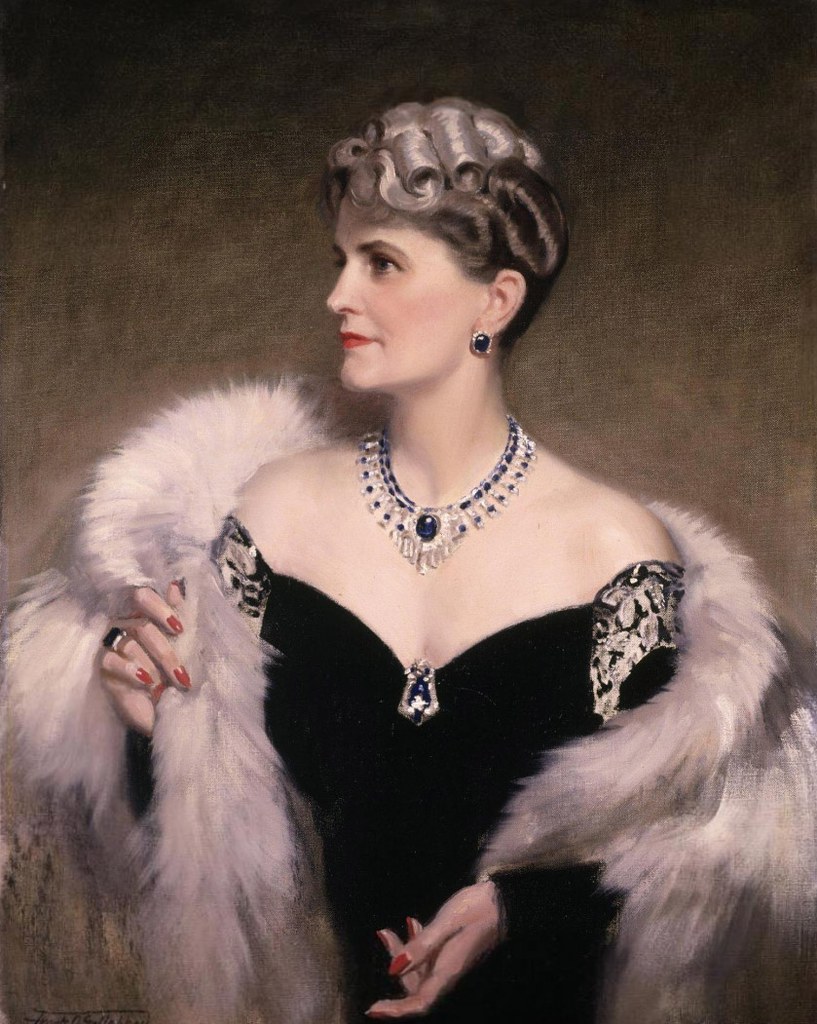
Development of Properties and Collections
In 1905, Post married the lawyer Edward Bennett Close, with whom she had two daughters.Howard Vincent Kurtz, Ingenue to Icon: 70 Years of Fashion from the Collection of Marjorie Merriweather Post (Washington D.C.: Hillwood Estate, Museum & Gardens in association with D. Giles Limited, London, 2015), 46. By 1915, the couple had moved to New York, where Post furnished their Manhattan townhouse in the French neoclassical style, which was fashionable among New York’s elite at the time.“Estate,” Hillwood Estate, Museum & Gardens. This interest in the French decorative arts of the eighteenth century would influence her future collecting and decorating.Estella M. Chung, Living Artfully: At Home with Marjorie Merriweather Post (Washington, D.C.: Hillwood Museum and Gardens Foundation, in Association with D. Giles Limited, 2013), 12. As an adult, Post also built a winter estate, Mar-a-Lago, in Palm Beach, Florida; a three-story, fifty-four room New York penthouse apartment; an Adirondacks summer estate, Camp Topridge; and a four-masted yacht, the Sea Cloud. In 1965, Post wrote: “The operation of my household is the result of careful planning over the many years . . . each house is an entity, with its own equipment for that particular spot and environment.”Chung, Living Artfully, 13.
To furnish her properties, Post became an avid and discerning collector, and Sir Joseph Duveen especially played a critical role in the development and focus of Post’s collecting. Duveen was an art dealer whose clients included major collectors, such as Henry Clay Frick, Andrew Mellon, John D. Rockefeller, and J. P. Morgan. Duveen provided Post with exemplary eighteenth-century French artworks and decorative objects, especially furniture and tapestries.“Estate,” Hillwood Estate, Museum & Gardens. Post also came to specialize in the acquisition of Sèvres porcelain, gold boxes, and jeweled objects.“Estate,” HIllwood Estate, Museum & Gardens.
Post and her first husband divorced in 1919. Subsequently, she married the stockbroker Edward F. Hutton, with whom she had her youngest daughter, later known as the actress Dina Merrill. After divorcing Hutton in 1935, Post sought more control over the company that she had inherited from her father and became a member of the board of directors of General Foods, one of only a small number of women in such a position at the time.Kurtz, Ingenue to Icon, 13. That same year, she met and married her third husband, the attorney Joseph E. Davies, who was appointed U.S. ambassador to the Soviet Union, then under the dictatorship of Joseph Stalin. Post accompanied Davies to Moscow, and there developed a passion for Russian imperial artworks through her exposure to the people and culture of Russia and the availability of objects in commission shops and state-run storerooms.“Estate,” Hillwood Estate, Museum & Gardens.
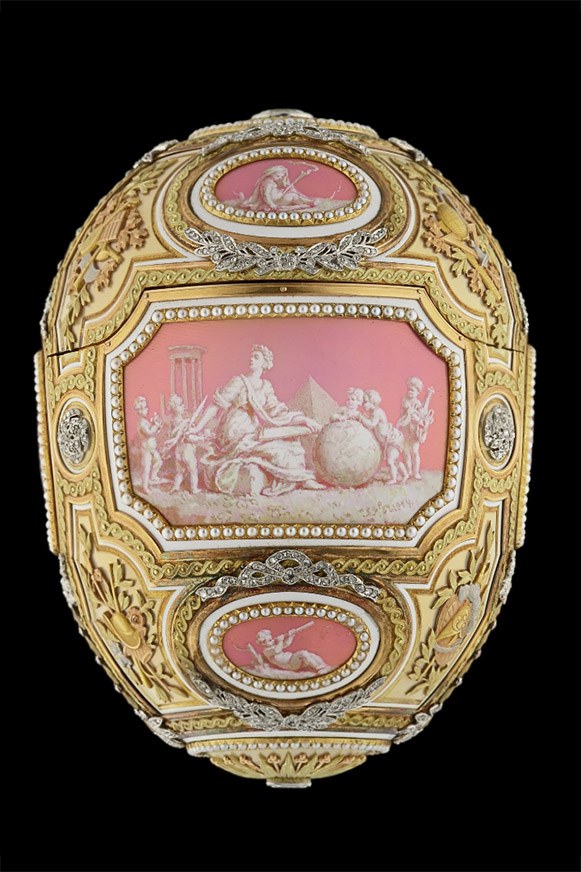
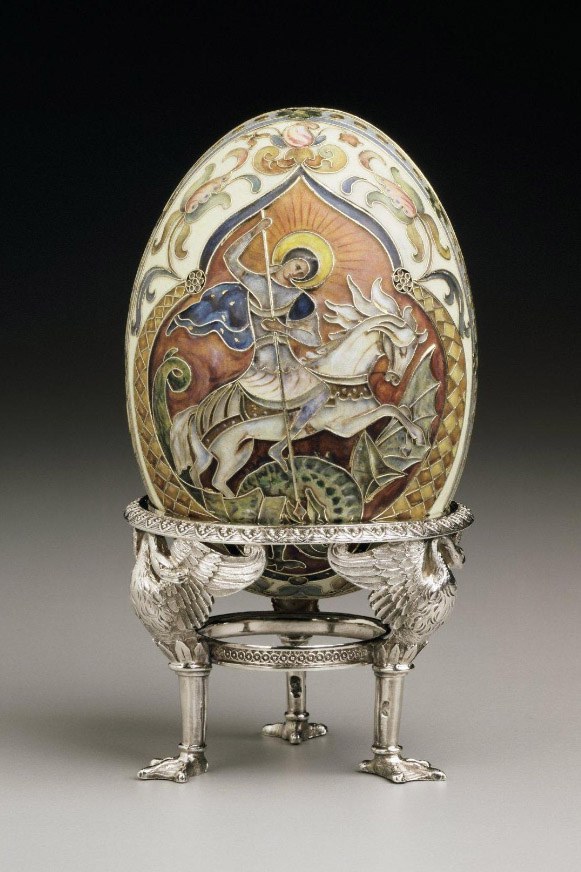
This art was available due to the Soviet Union’s official policy of financing its industrialization plans by selling off paintings and objects that had been confiscated from the imperial family, the aristocracy, churches, and some museums.Anne Odom and Liana Paredes Arend, A Taste for Splendor: Russian Imperial and European Treasures from the Hillwood Museum, (Alexandra, Va.: Art Services International, 1988), 40. Post eventually amassed the largest and most comprehensive collection of Russian imperial art outside of Russia, as well as rare books on Russian arts and artifacts. Her collecting activities spanned the years between 1937 and her death in 1973. After her stay in the Soviet Union, most of her pieces were bought at auction or through dealers in New York, Paris, and London.Odom and Arend, Taste for Splendor, 50.
Hillwood Estate
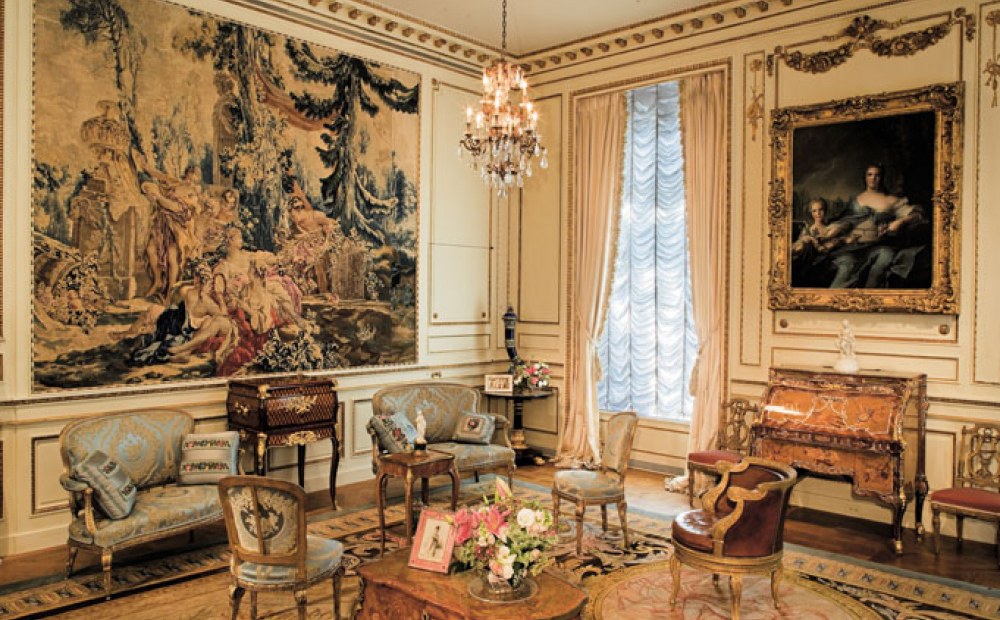
Post divorced Davies in 1955 and purchased the Arbremont estate in Northwest Washington, D.C, which she renamed Hillwood after a property she had owned on Long Island.Karen Callaway, “Bequeathing Beauty: Hillwood Estate, Museum & Gardens,” Victoria Magazine, July 29, 2016, https://www.victoriamag.com/hillwood-estate-museum-gardens. Hillwood became her residence in spring and autumn for the remainder of her life. The 1920s neo-Georgian house was purposely renovated so that she could showcase in a house museum-like setting her collections of Russian imperial art and French decorative arts. Post also renewed the twenty-five acres of gardens created in 1926 by the landscape architect William Gebhart. She favored the creation of “garden rooms,” such as a French-style parterre garden, a crescent-shaped “lunar lawn,” a rose garden, and an indoor orchid garden.Marjorie Merriweather Post, Notes on Hillwood (Washington, D.C.: Corporate Press, 1979), 54–56.
Philanthropy
During her years in Washington, D.C., Post was generous with her wealth. She once wrote, “There are many people better off than I am, but I do more with my money. I move it around and put it to work.”Wright, Heiress, 2. In Washington, she gave to the National Symphony Orchestra, the Boy Scouts of America, the Kennedy Center, Mount Vernon College (Post’s alma mater), and the Washington Ballet Guild. Continuing a fifty-year commitment to supporting American soldiers and veterans of war, in the 1960s and 1970s, Post opened Hillwood to Vietnam veterans who were patients at the Bethesda Naval Hospital and the Walter Reed Army Medical Center, inviting them for afternoons of tea and live entertainment.“Estate,” Hillwood Estate, Museum & Gardens. She also financed college scholarships for men and assisted elderly women (at one point supporting thirty such women).Wright, Heiress, 7.
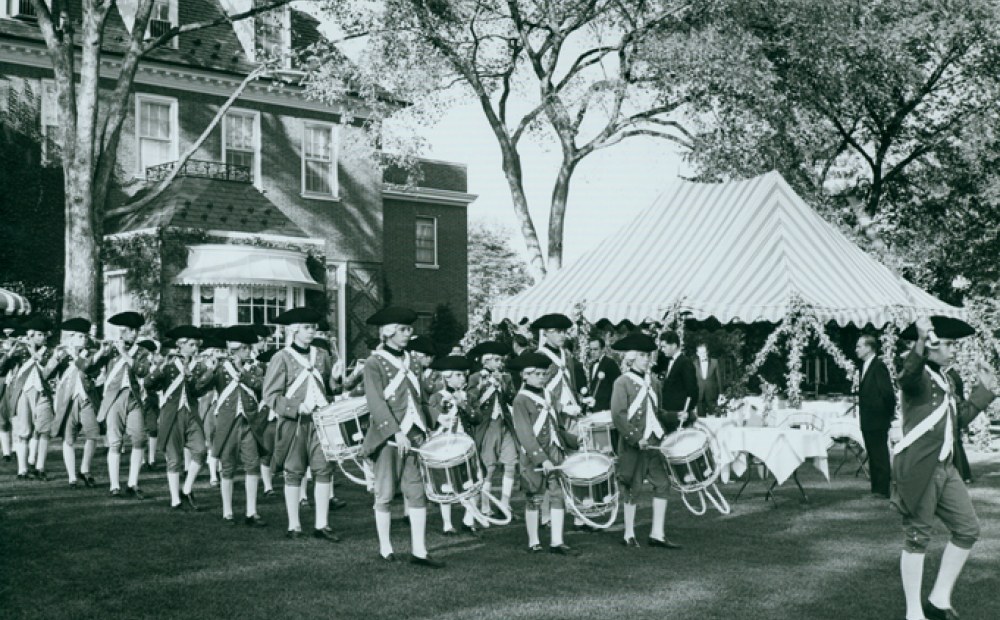

Her most important act of philanthropy, however, was her creation and gift of the Hillwood Estate, Museum & Gardens. As early as 1952, Post had decided that her home would be a museum for inspiring and educating the public. She consulted with acquaintances about the logistics of collector museums that she had visited in Europe and the United States, such as the Huntington Museum in San Marino, California, the Gardner Museum in Boston, and the Taft Museum in Cincinnati.Odom and Arend, Taste for Splendor, 31. In 1958, Post hired an art scholar, Marvin Chauncey Ross, to curate her collections. His mandate was to institute a museum-type recording system and begin a publishing program. He also expanded the library, collected additional artworks, lectured about the collection, and trained a group of Post’s friends to serve as docents when Hillwood was regularly opened to tours in the mid-1960s.Odom and Arend, Taste for Splendor, 33.
In 1962, Post reminisced on her decision to make her house and collection public: “I want young Americans to see how someone lived in the twentieth century and how this person could collect works of art the way I have. . . . I want to share this with the rest of the world. Maybe it’ll be an incentive to some people. Maybe it won’t, but at least they’ll get a chance to see how I lived.”Chung, Living Artfully, 20.
In 1968, Post offered Hillwood to the Smithsonian Institution with the understanding that she could live there until she died.Kurtz, Ingenue to Icon, 157. After Post’s death in 1973, the Hillwood Estate, Museum & Gardens was officially willed to the Smithsonian. However, by 1975, the Smithsonian found that the $10 million endowment left for Hillwood’s maintenance was insufficient to operate the museum. The estate was returned to the Marjorie Merriweather Post Foundation, which was established to operate Hillwood and Post’s other properties.Stuart, American Empress, 379. As a private institution, the endowment was increased by the sale of Mar-a-Lago and has since grown to approximately $200 million.
In 1977, Post’s oldest daughter Adelaide opened Hillwood’s doors to a small group of friends and art lovers; visits were allowed four days a week by written appointment. In 1989, Post’s granddaughter Ellen Charles became president of the museum’s board of trustees. With the help of museum director Fred Fisher, she oversaw the estate’s evolution into a professional museum over the next two decades: curators were recruited to research and publish articles in respected art journals, fundraising events and exhibitions were launched, and the museum was opened to all visitors six days a week. A three-year renovation project in 1997 brought the property up to the standards of other museums while 180 of its best pieces toured eight museums across the country. In 2014, Charles stepped down from her position as board director.Roxanne Roberts, “Marjorie Merriweather Post wanted her house to be a museum. Ellen Charles made it happen,” Washington Post, June 2, 2014, https://www.washingtonpost.com/lifestyle/style/marjorie-merriweather-post-wanted-her-house-to-be-a-museum-ellen-charles-made-it-happen/2014/06/02/19c1c4f4-ea69-11e3-9f5c-9075d5508f0a_story.html?utm_term=.b3edd7f712d3. The current board of trustees, which includes some members of the Post family, governs the museum, while an executive director, more than eighty-five employees, and many volunteers are responsible for day-to-day operations.“How We Are Run,” Hillwood Estate, Museum & Gardens, accessed February 5, 2018, https://www.hillwoodmuseum.org/how-we-are-run/operations.
The Continuing Mission of Hillwood
According to the Hillwood Estate, Museum & Gardens, its mission is “to delight and engage visitors with an experience inspired by the life of founder Marjorie Merriweather Post and her passion for excellence, gracious hospitality, art, history, and gardens.”“Mission and Vision,” Hillwood Estate, Museum & Gardens, accessed January 16, 2018, https://www.hillwoodmuseum.org/how-we-are-run/mission-and-vision. However, Hillwood also serves as a research center through its in-house library of some 38,000 items, including the archives of four prominent scholars. Hillwood runs the annual Liana Paredes Fellowship Program, which provides scholars access to library resources and supports their studies on a variety of subjects.“Liana Paredes Fellowship Program,” Hillwood Estate, Museum & Gardens, accessed February 2, 2018, https://www.hillwoodmuseum.org/liana-paredes-fellowship-program. Beyond its collections and library, Hillwood serves as a center for social and cultural programming. For example, since 2001, with the formation of the Hillwood GLBT Advisory Committee, Hillwood has offered programs that engage that community in Washington, D.C.“Gay Day, Picnic in Partnership with Rainbow Families, and Divas Outdoors Highlight a Series of GLBT Programming at Hillwood this September,” Hillwood Estate, Museum & Gardens, accessed January 16, 2018, https://www.hillwoodmuseum.org/sites/default/files/file-resources/Hillwood%20GLBT%20series%20September%202014.pdf. A central event is the Annual Gay Day, a celebration and garden party.Clarence Fluker, “Hillwood: A Home for Everyone,” Washington Post, September 14, 2011, https://www.washingtonpost.com/blogs/therootdc/post/hillwood-a-home-for-everyone/2011/09/14/gIQAmu6mSK_blog.html?utm_term=.411d9213556f.
In creating Hillwood as a public institution, Post was aware that she had collected museum-quality objects and created an estate and gardens worthy of preservation for the public good. In 1970, she wrote, “I am particularly attracted by the beauty of an object, its craftsmanship, history, etc. When I began I [collected] for the joy of it, and it was only as the collections grew and such great interest was evidenced by others, that I came to the realization that the collection should belong to the country.”Odom and Arend, Taste for Splendor, 36, referencing from a letter by Marjorie Merriweather Post to Mrs. Green dated 8 April 1970, Post Collection, Bentley Historical Library, University of Michigan, Ann Arbor.
Profile by Cengiz Cemaloğlu, 2018 Wintersession student, and Faye Yan Zhang, 2017–2018 Dumbarton Oaks Humanities Fellow.